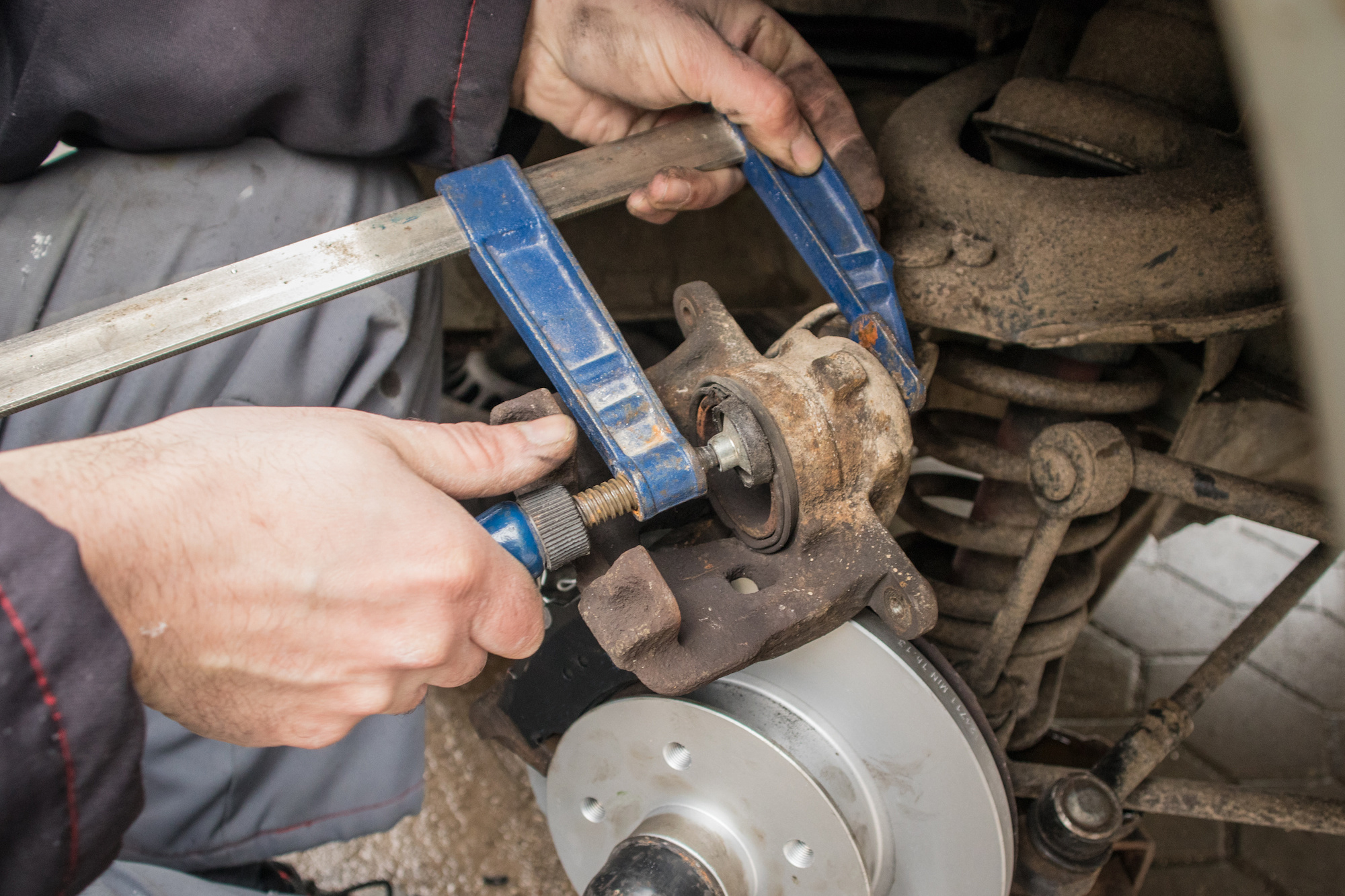Brake maintenance is essential to ensure the safety and performance of your vehicle. One common task when replacing brake pads or servicing brake calipers is compressing the piston on the brake caliper.
Knowing how to properly compress the piston is crucial to avoid damaging the caliper and ensure proper brake function.
In this guide, we will walk you through the steps to safely and effectively compress the piston on a brake caliper.

Credit: www.ebay.com
Tools and Materials You’ll Need
Before starting the compression process, gather the following tools and materials:
- Jack and jack stands
- Lug wrench
- Socket set
- C-clamp or piston compression tool
- Brake fluid (if bleeding the brakes)
- Clean cloth
Step-by-Step Instructions
Follow these steps to properly compress the piston on a brake caliper:
- Lift the Vehicle: Using a jack, lift the vehicle off the ground and secure it on jack stands. Remove the wheels using a lug wrench to access the brake calipers.
- Access the Brake Caliper: Locate the brake caliper housing the piston. Depending on the vehicle, you may need to remove a cap or rubber boot to access the piston.
- Prepare the Caliper: If you are replacing the brake pads, remove the caliper from its mounting bracket using a socket set. Be mindful of the brake line and avoid putting strain on it.
- Compress the Piston: Place a C-clamp or piston compression tool over the piston and the back of the caliper. Slowly tighten the clamp or tool to compress the piston back into the caliper bore. This may require some force, especially if the caliper has multiple pistons.
- Check and Clean: Inspect the caliper boots and piston for any damage or excessive wear. Clean the caliper and piston with a clean, lint-free cloth to remove any dirt or contaminants.
- Reassemble and Bleed (If Necessary): If you removed the caliper, reattach it to the mounting bracket using the socket set. Ensure all bolts are tightened to the manufacturer’s specifications. If you opened the brake system, such as when replacing the caliper, you may need to bleed the brakes to remove any air from the system.
- Reinstall the Wheels: Put the wheels back on the vehicle and hand tighten the lug nuts. Lower the vehicle to the ground and then torque the lug nuts to the manufacturer’s specifications.
Tips and Precautions
When compressing the piston on a brake caliper, keep the following tips in mind:
- Use a proper fitting C-clamp or piston compression tool to avoid damaging the caliper or piston.
- Inspect the caliper, pads, and rotors for any signs of damage or excessive wear while servicing the brakes.
- Be cautious of the brake line to prevent causing a leak or damaging the line.
- Always consult the vehicle’s service manual for specific instructions related to your car’s make and model.
By following these steps and tips, you can safely and effectively compress the piston on a brake caliper. Proper maintenance of your vehicle’s braking system is crucial for a safe and enjoyable driving experience.
